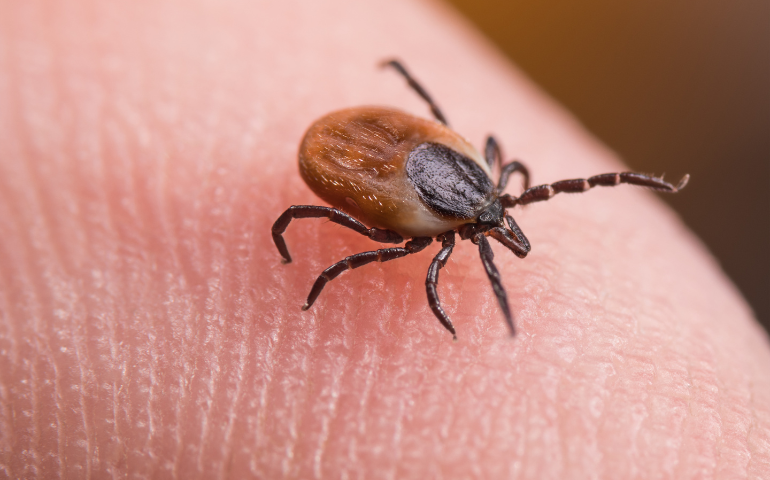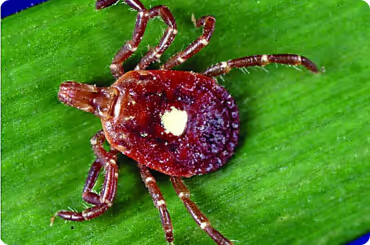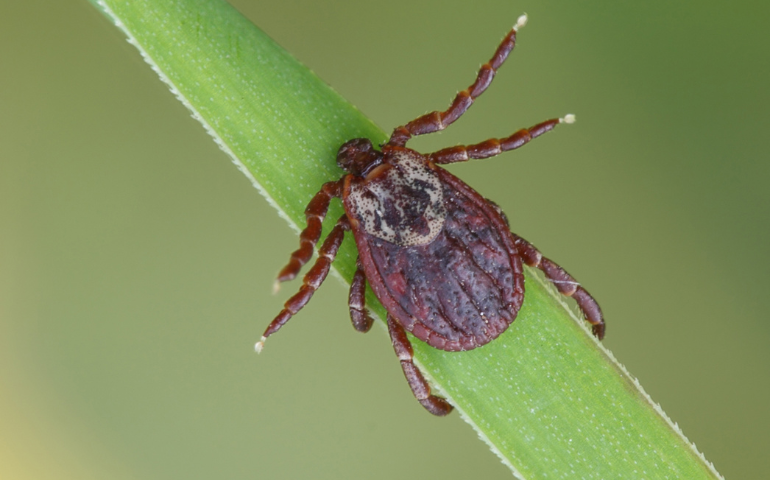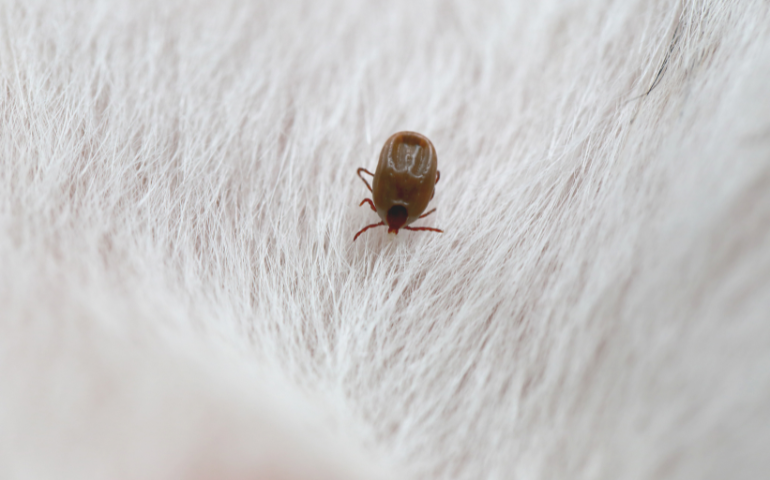What are Ticks?
The eight-legged parasitic arachnids called Ticks can be found in the same family as spiders, mites and scorpions. Ticks have no wings and a unique oval-shaped body. They have two sensory structures on their heads (palps and chops) which help them find hosts. A barbed structure (hypostome), which they use to attach themselves to their host for food, is also available.
The tick color can vary depending on the species. Tick larvae can grow to a length of less than one mm and can grow up to 1 cm in length if they are engorged with blood. Adults can also be smaller than a sunflower seeds. Ticks only have six legs in their larval stage, and eight during the nymphal or adult stages.
What Kinds of Ticks Are There?

The deer tick is brownish-orange and has distinctive dark-colored legs. Adult ticks are approximately the same size as a sesame seeds before they are fed. Because they prefer deer as their host, they are called deer ticks. They also feed on many other animals and humans, in addition to deer.

After being fed, lone star ticks turn a slate grey color. They are reddish brown. One white spot is found on the back of female lone star ticks. Males have several smaller white spots. White lines are also found on the top of males' bodies. This tick species prefers larger hosts such as dogs, deer and people to smaller rodents.

The Asian longhorned tick is a small, reddish-brown tick, typically about the size of a sesame seed when unfed. Unlike many other tick species, it can reproduce asexually, meaning a single female can create large populations without the need for a male. This tick has a smooth, oval-shaped body with short mouthparts and lacks the ornate markings seen in some other tick species. It becomes noticeably larger after feeding.

Brown dog ticks, as their name suggests, prefer to eat the blood of dogs. They can also bite humans and other animals.
Behavior and Habitat of Ticks
Habitat
Many species are found in areas with dense vegetation and wooded areas. Certain species need moisture to survive. The species may survive indoors in cracks, crevices or the burrow of their host.
Diet
Males and females of most species eat blood from birds, mammals, and reptiles. Although each species has a preferred host for their food, most will eat whatever is available. Bite is a common behavior of ticks.
- Dogs and cats
- Deer
- Humans
- Livestock
Life Cycle
Ticks eat blood meals at all stages of their lives. Pathogens are organisms that can cause disease in animals and can be passed on through each stage of a tick’s lifespan. There are four stages to the tick’s life cycle:
- Egg
- Larval
- Nymphal
- Adult
Fleas vs. Ticks
Ticks and fleas are parasitic, living on larger hosts than they are. Fleas and ticks both feed on the blood of their hosts and transmit various diseases. Despite the fact that neither fleas nor ticks prefer humans as primary hosts, both parasites have been known to feed on human blood in the absence any other food sources.
Fleas
Fleas are six-legged insects. Fleas are not able to fly and have no wings. The flea’s flat bodies and long legs have been adapted to allow for impressive jumping skills as well as the ability to maneuver through dense fur and hair unimpeded. There are many species of fleas that live in homes around the globe. The complete metamorphosis occurs in the form of an egg, larval, pupa, and adult flea. Only adults eat blood.
Ticks
Adult ticks have four pairs of legs, just like other arachnids. As larvae, however, they have six legs. After molting, they get their fourth pair. They do not live in specific areas, but rather they prefer to be near their hosts. The pests can be found in a variety of habitats, including forests, grasslands, and homes. All stages of the tick’s life cycle depend on blood, including hatching.
Diseases
Ticks are not only a nuisance but also vectors of various serious diseases, posing significant health risks to humans and animals alike. Among the most notable diseases transmitted by ticks are Lyme disease and Colorado tick fever, both of which can have severe consequences if left untreated.
Lyme Disease:
Lyme disease is caused by the bacterium Borrelia burgdorferi and is primarily transmitted to humans through the bite of infected black-legged ticks (also known as deer ticks). Early symptoms of Lyme disease may include fever, headache, fatigue, and a characteristic bull’s-eye rash. If left untreated, Lyme disease can lead to more serious complications affecting the joints, heart, and nervous system.
Colorado Tick Fever:
Colorado tick fever is caused by the Colorado tick fever virus, which is transmitted to humans by the bite of infected Rocky Mountain wood ticks. Symptoms of Colorado tick fever may include fever, chills, headache, muscle aches, and fatigue. While most cases of Colorado tick fever resolve on their own without treatment, severe cases can lead to complications such as meningitis or encephalitis.
In addition to Lyme disease and Colorado tick fever, ticks can also transmit other diseases such as Rocky Mountain spotted fever, babesiosis, anaplasmosis, and ehrlichiosis, among others. Given the serious health risks associated with tick-borne diseases, it’s essential to take proactive measures to prevent tick bites and reduce your risk of infection.
How to get rid of ticks:
To effectively manage and eradicate tick infestations, it’s crucial to understand the nature of these parasitic arachnids and employ targeted control strategies. Ticks encompass a diverse array of species, each exhibiting unique behavioral characteristics and life cycle stages. From the common dog tick to the more elusive deer tick, these pests pose significant health risks to both humans and animals due to their potential to transmit diseases such as Lyme disease, Rocky Mountain spotted fever, and others.
Addressing a tick problem necessitates proactive measures to mitigate their presence and prevent potential health hazards. If ticks have become an issue in your environment, seeking professional assistance is paramount. At Alta Pest Control, our team of seasoned experts possesses the knowledge, experience, and resources to effectively combat tick infestations.
Here’s how we tackle tick problems:
- Thorough Inspection: Our skilled technicians conduct a comprehensive assessment of your property to identify tick hotspots, breeding sites, and potential entry points. This meticulous inspection enables us to devise a tailored treatment plan suited to your specific needs.
- Targeted Treatment: Leveraging advanced pest control techniques and eco-friendly products, we implement precise measures to eliminate ticks at all life stages. Whether it’s employing barrier treatments, applying residual insecticides, or deploying tick-specific treatments, we employ strategies designed for maximum efficacy.
- Preventive Measures: Beyond mere eradication, we prioritize long-term prevention to thwart future tick infestations. By addressing conducive conditions, such as overgrown vegetation, leaf litter, and wildlife harborage areas, we create an inhospitable environment for ticks to thrive.
- Education and Awareness: Our team educates clients on tick biology, behavior, and conducive conditions, empowering them to take proactive measures to minimize tick encounters and safeguard their health. We provide valuable insights on tick prevention strategies, personal protection measures, and environmental modifications to reduce tick habitat.
- Regular Monitoring and Follow-Up: Our commitment to customer satisfaction extends beyond initial treatment. We offer ongoing monitoring and follow-up services to ensure the effectiveness of our interventions and address any emerging issues promptly.
In summary, if ticks have become a concern in your surroundings, don’t hesitate to reach out to your local Alta Pest Control professionals. With our expertise and dedication to excellence, we’ll swiftly and effectively address your tick infestation, restoring safety and peace of mind to your home or property.
